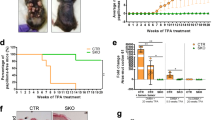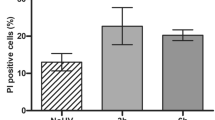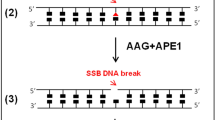Abstract
Dermal fibroblasts cultured from members of a family presenting multiple polyps and sarcomas were compared with fibroblast strains from unrelated healthy donors for sensitivity to killing by four genotoxic agents. Cells from the sister of the male proband (strain 3437T), mother (strain 3703T), two of his paternal aunts (3701T and 3704T) and one paternal uncle (3702T) displayed marked resistance (1.8 to 4.3 times greater than the normal mean) to 4-nitroquinoline 1-oxide (4NQO), a procarcinogen whose DNA-damaging properties encompass those of both far (254 nm) ultraviolet (UV) light and ionising radiation. These same 4NQO-resistant cells, however, responded normally to reproductive inactivation by UV light, 60Co gamma radiation or the alkylating agent methylnitrosourea, signifying that the abnormal resistance of these cells to 4NQO is not associated with aberrant DNA metabolism. In keeping with this conclusion, exposure to a given dose of 4NQO produced decreased amounts of DNA damage and stimulated lower levels of repair DNA synthesis in all five 4NQO-resistant strains than in normal controls. Moreover, exogenous radiolabelled 4NQO accumulated to a lesser extent in the 4NQO-resistant than in the normal fibroblasts. Cell sonicates of strains 3437T, 3701T and 3702T exhibited reduced capacities (40-60% of normal) to catalise the conversion of 4NQO to the proximate carcinogen 4-hydroxyaminoquinoline 1-oxide. However, the 4NQO-resistant strains 3703T and 3704T carried out 4NQO bioreduction at normal rates. Our data therefore indicate that enhanced resistance to 4NQO cytotoxicity in 3437T, 3701T and 3702T is a consequence of anomalies in both intracellular accumulation and enzymatic reduction of 4NQO, whereas 4NQO resistance in 3703T and 3704T appears to result solely from reduced intracellular drug accumulation.
This is a preview of subscription content, access via your institution
Access options
Subscribe to this journal
Receive 24 print issues and online access
$259.00 per year
only $10.79 per issue
Buy this article
- Purchase on Springer Link
- Instant access to full article PDF
Prices may be subject to local taxes which are calculated during checkout
Similar content being viewed by others
Author information
Authors and Affiliations
Rights and permissions
About this article
Cite this article
Mirzayans, R., Sabour, M., Rauth, A. et al. Hyperresistance to 4-nitroquinoline 1-oxide cytotoxicity and reduced DNA damage formation in dermal fibroblast strains derived from five members of a cancer-prone family. Br J Cancer 68, 838–844 (1993). https://doi.org/10.1038/bjc.1993.442
Issue Date:
DOI: https://doi.org/10.1038/bjc.1993.442



